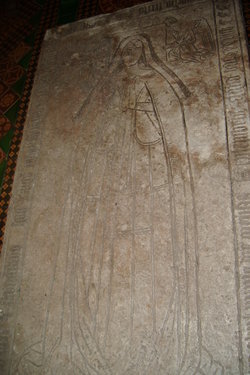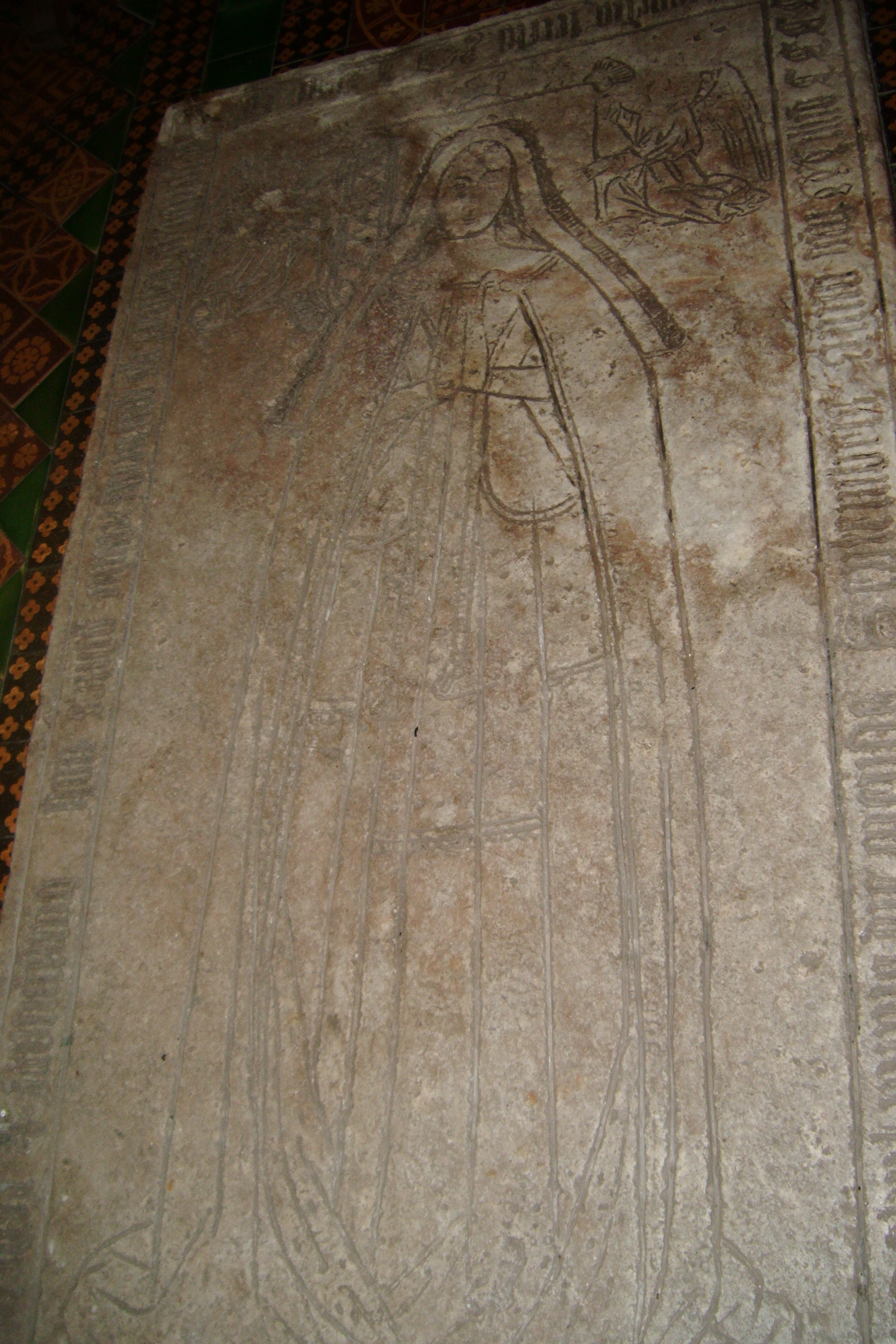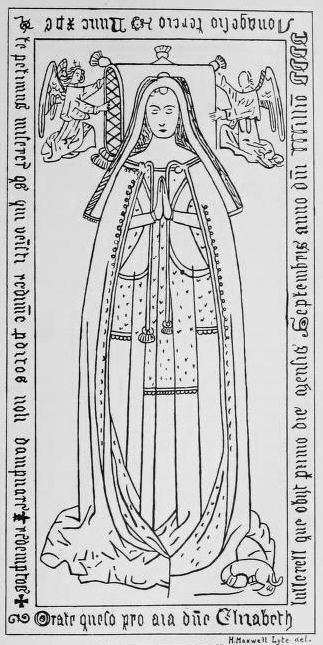The Archaeological Journal Published Under the Direction of the Council of the Royal Archaeological Institute of Great Britain and Ireland, for the Encouragement and Prosecution of Researches into the Arts and the Monuments of the Early and Middle Ages, vol. 37, London, 1880, (sub 'Dunster and Its Lords', part II), p. 176:
Soon after he came of age, James Luttrell effected an entail of the castle and manor of Dunster, of the manors of Minehead, Carhampton, and Kilton, and of the hundred of Carhampton, with a view to his marriage with Elizabeth, daughter of his guardian, Sir Philip Courtenay, of Powderham. The wedding took place in the private oratory, or chapel of Powderham Castle, by special permission of Bishop Lacy, in 1450. Two of the shields sculptured over the western arch of the gatehouse at Dunster show the arms of Luttrell impaled with those of Courtenay. The first commemorates the marriage Andrew Luttrell with Lady Elizabeth Courtenay, who purchased Dunster from Lady Joan Mohun; the second commemorates the marriage of their great-grandson with another Elizabeth Courtenay, and heralds may notice that in the second instance the label on the Courtenay shield bears nine labels as a mark of cadency, the Courtenays of Powderham, being a younger branch of the family then represented by the Earl of Devon.
The Archaeological Journal Published Under the Direction of the Council of the Royal Archaeological Institute of Great Britain and Ireland, for the Encouragement and Prosecution of Researches into the Arts and the Monuments of the Early and Middle Ages, vol. 37, London, 1880, (sub 'Dunster and Its Lords', part II), p. 176:
Soon after he came of age, James Luttrell effected an entail of the castle and manor of Dunster, of the manors of Minehead, Carhampton, and Kilton, and of the hundred of Carhampton, with a view to his marriage with Elizabeth, daughter of his guardian, Sir Philip Courtenay, of Powderham. The wedding took place in the private oratory, or chapel of Powderham Castle, by special permission of Bishop Lacy, in 1450. Two of the shields sculptured over the western arch of the gatehouse at Dunster show the arms of Luttrell impaled with those of Courtenay. The first commemorates the marriage Andrew Luttrell with Lady Elizabeth Courtenay, who purchased Dunster from Lady Joan Mohun; the second commemorates the marriage of their great-grandson with another Elizabeth Courtenay, and heralds may notice that in the second instance the label on the Courtenay shield bears nine labels as a mark of cadency, the Courtenays of Powderham, being a younger branch of the family then represented by the Earl of Devon.
Inscription
Orate queso pro ai'a dn'e Elizabeth Lutterell que obit primo die mensis Septembris anno dni m.c.c.c.c. nonagesio tertio. Hunc ate te petimus miserer. q's qui veisti redime p'ditos noli dampnare redemptos.
Gravesite Details
Effigy on a flat alabaster stone before the high altar.
Family Members
Advertisement
Advertisement






